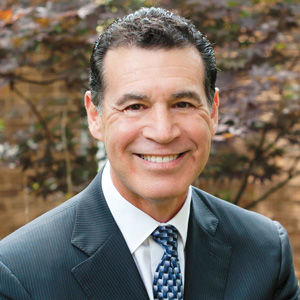A case for the welcoming the stranger in our world
Published October 17, 2019
The intermediate Shabbat of Sukkot has provided our sages with opportunities to help us take stock of ourselves and to be aware of our surroundings as we celebrate the fall harvest. Liturgically, our sages inserted some important attitudes provided to us by the assigned section of the Torah (Exodus 33:12 – 34:26 and the additional section in Numbers 29:26-34).
During our ceremony for the removal of the Torah from the Ark in anticipation of its public reading, we recite the last nine words of Exodus 34:6 and the first eight words of 34:7, describing the Almighty as “compassionate and gracious, slow to anger, abounding in kindness and faithfulness, extending kindness to the thousandth generation, forgiving iniquity, transgression, and sin.”
While the Torah reveals these words as attributes of the Almighty, we (as in the Genesis 1:27 b’tzelem Elokim) can see these attributes as aspirational. As we are created in the “image of the Almighty,” we work to live our lives espousing the very attributes Moses assigned to the One. Every person must work daily to be compassionate and gracious. Because compassion can be misunderstood as judgmental or elitist, we exhibit grace and humility in the act toward others.
We are challenged to be slow to anger so we may examine all facets of the perceived cause of our anger and look for avenues to either assuage or, at least, temper our emotions. We need to abound in kindness and faithfulness so that our outreach is not perceived as disingenuous or transactional.
We extend this kindness to the thousandth generation because we hold the key to the World To Come (the generation yet to be born). We must be leaders in our own generation so that the last generation can tell the generation we will never see that they must find inspiration in the behaviors and decisions we left behind.
While we must learn to forgive iniquity, transgression and sin, we cannot forget the circumstances that incited such acts to our detriment and help future generations come to terms with our own weaknesses and provide them a formula by which they can inoculate themselves from allowing society to become so weak and fractured that the insidiousness of weaponized rumor mongering may remain forever encased by understanding, tolerance, diversity and harmony among nations.
Sukkot is one of our many Holy Days that highlight the aforementioned aspects and ignite exploration into ways we can play our best behaviors out in our daily lives. The great Maimonides tells us that anyone who sits comfortably with his family within his own walls and does not share with the poor is performing a mitzvah “not for joy but for the stomach.”
In addition to extending personal overtures to the needy, we open our homes (sukkah) symbolically. With a formula established by the kabbalists in the 16th century, based on the earlier Zohar, on each night of Sukkot we invite one of seven exalted men of Israel to take up residence in the sukkah with us. Referred to us as ushpizin, these seven (Abraham, Isaac, Jacob, Joseph, Moses, Aaron and David, and in later times Sarah, Rachel, Rebecca, Leah, Miriam, Abigail and Esther) represent our history of uprootedness and how they, in their worst situations, comported themselves and contributed to the world through respective personal characteristics: loving kindness, strength, splendor, glory, holiness, eternity, sovereignty.
Each night of Sukkot, we highlight at least one of the seven and teach our children, while reminding ourselves, that it is through those characteristics we can “repair the world.”
Let’s start small. Look at a sukkah. Notice how the top (the schach) allows us to peek through to see the stars and planets in the universe. Feel the walls shake as the wind ushers a seasonal change in hope of cleansing our atmosphere. Smell the fragrances of freshly shorn branches mingling with the notes of harvested fruits and prepared recipes handed down through the generations. Hear the cacophonous sounds of teen and adult conversations blending with the high-pitched tones of amazed and excited children as they craft makeshift Torot and Lulavim to hold and wave in rhythm with the time honored gestures of the Naanuim; beating of the Hoshanot; the raising of the scroll as it is returned to the Ark.
It is through these practices and so much more that we can ensure that we will not allow the calcification of our ceilings to close our minds from the light of knowledge.
It is how we treat the stranger that will ensure that our walls will not close us into a cocoon of silence and indifference. It is through the attributes of the Almighty and the correlated attitudes of our ancestors that we will be able to construct a “shelter of peace” for all people and a safe, healthy and sustainable land for every living thing.
Cantor-Rabbi Ron Eichaker serves United Hebrew Congregation and is a member of the St. Louis Rabbinical and Cantorial Association, which coordinates the d’var Torah for the Light.
















